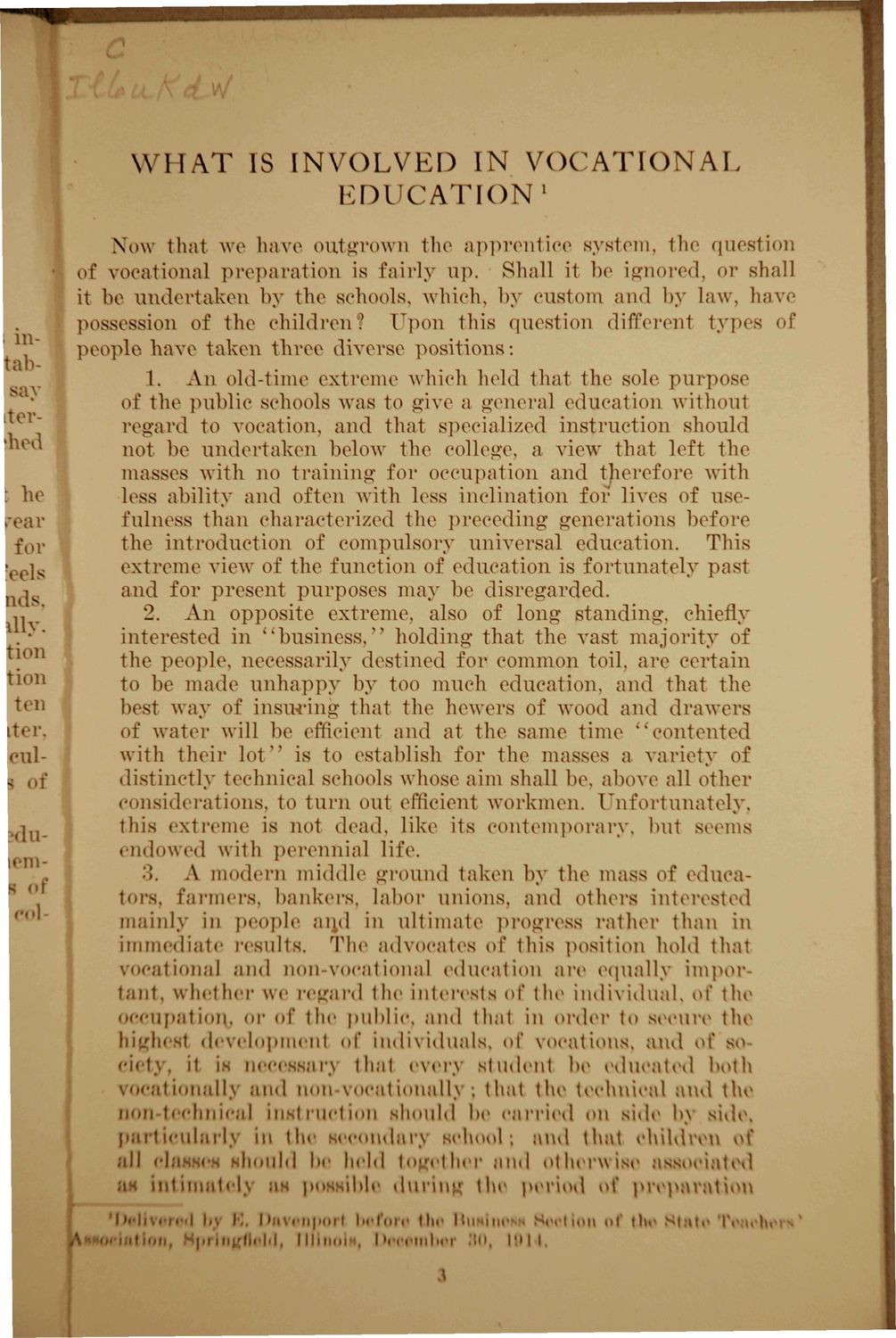| |
| |
Caption: Booklet - What is Involved in a Vocational Education (Davenport) (1915)
This is a reduced-resolution page image for fast online browsing.

EXTRACTED TEXT FROM PAGE:
1 W H A T IS INVOLVED IN VOCATIONAL 1 EDUCATION Now thai we have outgrown the apprentice system, the question of vocational preparation is fairly up. Shall it be ignored, or shall it be undertaken by the schools, which, by custom and by law, have possession of the children? Upon this question different types of people have taken three diverse positions: 1. An old-time extreme which held that the sole purpose of the public schools was to give a general education -without regard to vocation, and that specialized instruction should not be undertaken below the college, a view that left the masses with no training for occupation and therefore with less ability and often with less inclination for lives of usefulness than characterized the preceding generations before the introduction of compulsory universal education. This extreme view" of the function of education is fortunately past I and for present purposes may be disregarded. 2. An opposite extreme, also of long (standing, chiefly interested in "business," holding that the vast majority of the people, necessarily destined for common toil, are certain to be made unhappy by too much education, and that the best way of insuring that the hewers of wood and drawers of water will be efficient and at the same time "contented with their lot" is to establish for the masses a variety of distinctly technical schools whose aim shall be. above all other considerations, to turn out efficient workmen. Unfortunately. this extreme is not dead, like its contemporary, but s ms endowed with perennial life. .'!. A modern middle ground taken by the mass of educator farmers, bankers, labor unions, and others interested mainly in people and in ultimate progress rather than in immediate results. The advocates of this position hold thai vocational and non-vocational education are equally important, whether we regard the interests of the individual, of the occupation or of the public, and thai in order lo seeing the hi^le t development of individuals, of vocations, and of soeiet it is necessary thai every studenl be educated both vocational lj and n<»n vocationally; thai the technical and the non-technical instruction should be carried on side b\ side. particularly in the Neeondarj school; and that children of all e|;isses .should 1)0 l a i d 'l><«li I I »... , n j M . i I !<>"»• l l i r r ;ind o l h r r w r . (.ho P.n . i n . I mil of tfo \\t itO ialed IN .is intimately an poMNiblo during the period ^f preparation I . f.iir h nj hi, I Mi it 11 inhoi 110, Ill I i 3
| |